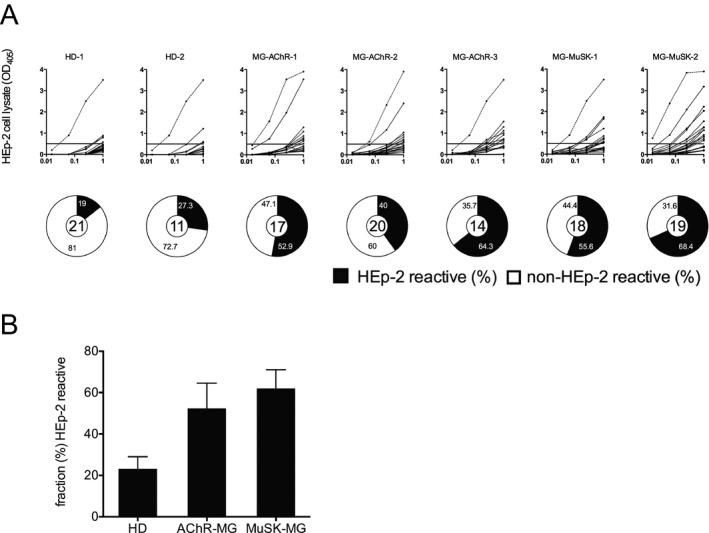Figure 3.

The fidelity of the peripheral tolerance checkpoint is compromised in patients with MG: Peripheral tolerance checkpoint HEp‐2 ELISAs. Recombinant antibodies, representing the B cell receptors (BCR), from single mature naive B cells (CD19+ CD21+ CD10−IgM+ CD27−) derived from three AChR MG patients (MG‐AChR‐1, MG‐AChR‐2, MG‐AChR‐3) and two MuSK MG patients (MG‐MuSK‐1, MG‐MuSK‐2) were cloned, expressed and then tested for reactivity against a HEp‐2 cell lysate by ELISA (A). Dotted lines show the positive control, a monoclonal antibody (ED38) cloned from a VpreB+L+ peripheral B cell that is highly poly‐ and self‐reactive. Solid lines show the binding curve of each cloned recombinant antibody. Horizontal lines at 0.5 OD mark the cutoff for positive reactivity. The control group includes antibodies from two healthy individuals (HD‐1, HD‐2). For each individual subject the fraction (%) of self‐reactive mature naive‐derived BCRs is summarized in the pie charts with the total number of tested clones in the center. Black shading indicates the frequency (%) of HEp‐2 antibodies and white shading indicates the frequency (%) of non‐HEp‐2 reactive antibodies. The mean fraction of HEp‐2‐reactive (B) antibodies was plotted for each of the three subject groups; HD and two MG disease subtypes (AChR and MuSK). Statistical differences are shown when significant.
